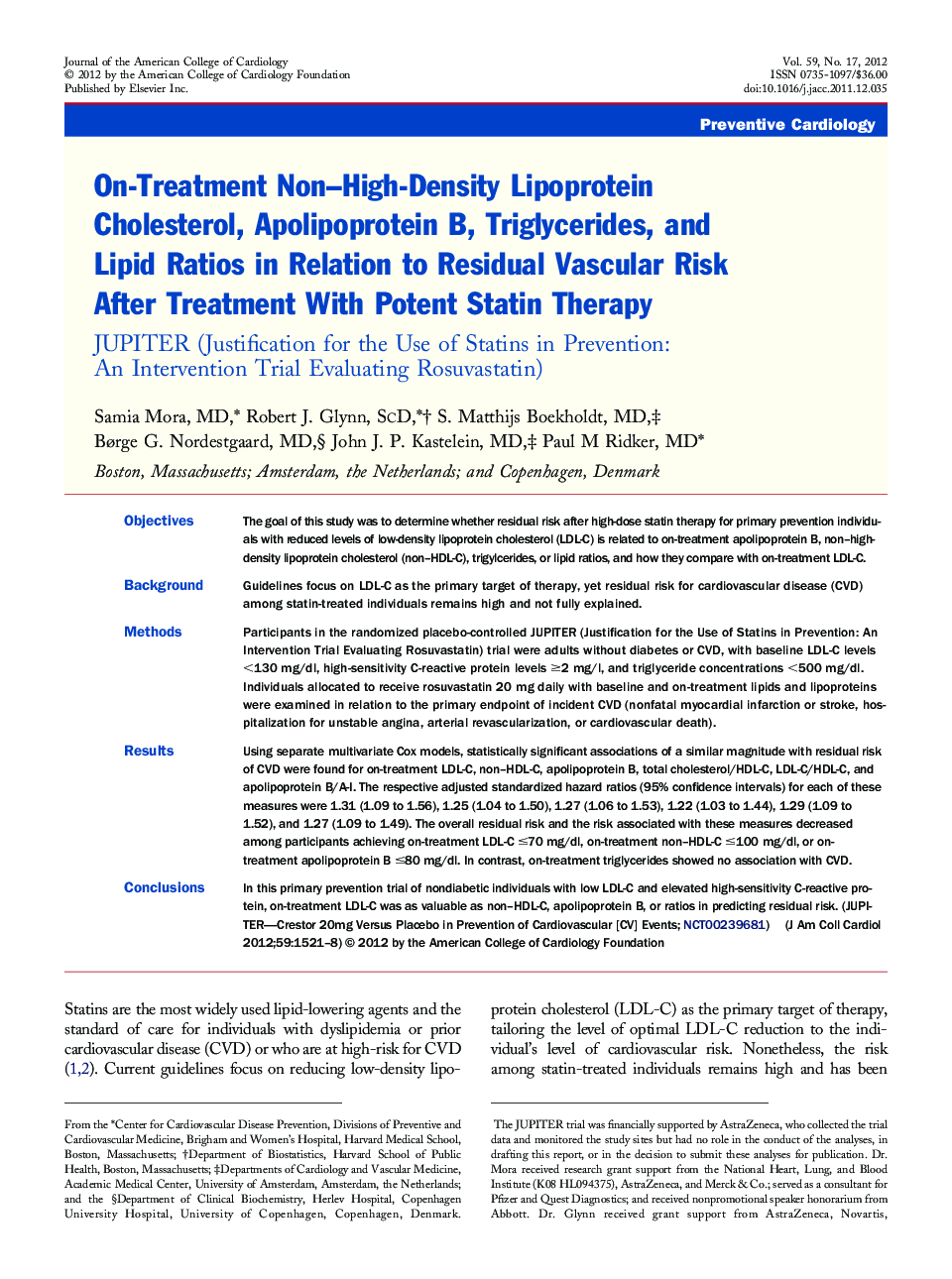| کد مقاله | کد نشریه | سال انتشار | مقاله انگلیسی | نسخه تمام متن |
|---|---|---|---|---|
| 2947479 | 1577214 | 2012 | 8 صفحه PDF | دانلود رایگان |

ObjectivesThe goal of this study was to determine whether residual risk after high-dose statin therapy for primary prevention individuals with reduced levels of low-density lipoprotein cholesterol (LDL-C) is related to on-treatment apolipoprotein B, non–high-density lipoprotein cholesterol (non–HDL-C), trigylcerides, or lipid ratios, and how they compare with on-treatment LDL-C.BackgroundGuidelines focus on LDL-C as the primary target of therapy, yet residual risk for cardiovascular disease (CVD) among statin-treated individuals remains high and not fully explained.MethodsParticipants in the randomized placebo-controlled JUPITER (Justification for the Use of Statins in Prevention: An Intervention Trial Evaluating Rosuvastatin) trial were adults without diabetes or CVD, with baseline LDL-C levels <130 mg/dl, high-sensitivity C-reactive protein levels ≥2 mg/l, and triglyceride concentrations <500 mg/dl. Individuals allocated to receive rosuvastatin 20 mg daily with baseline and on-treatment lipids and lipoproteins were examined in relation to the primary endpoint of incident CVD (nonfatal myocardial infarction or stroke, hospitalization for unstable angina, arterial revascularization, or cardiovascular death).ResultsUsing separate multivariate Cox models, statistically significant associations of a similar magnitude with residual risk of CVD were found for on-treatment LDL-C, non–HDL-C, apolipoprotein B, total cholesterol/HDL-C, LDL-C/HDL-C, and apolipoprotein B/A-I. The respective adjusted standardized hazard ratios (95% confidence intervals) for each of these measures were 1.31 (1.09 to 1.56), 1.25 (1.04 to 1.50), 1.27 (1.06 to 1.53), 1.22 (1.03 to 1.44), 1.29 (1.09 to 1.52), and 1.27 (1.09 to 1.49). The overall residual risk and the risk associated with these measures decreased among participants achieving on-treatment LDL-C ≤70 mg/dl, on-treatment non–HDL-C ≤100 mg/dl, or on-treatment apolipoprotein B ≤80 mg/dl. In contrast, on-treatment triglycerides showed no association with CVD.ConclusionsIn this primary prevention trial of nondiabetic individuals with low LDL-C and elevated high-sensitivity C-reactive protein, on-treatment LDL-C was as valuable as non–HDL-C, apolipoprotein B, or ratios in predicting residual risk. (JUPITER—Crestor 20mg Versus Placebo in Prevention of Cardiovascular [CV] Events; NCT00239681)
Journal: Journal of the American College of Cardiology - Volume 59, Issue 17, 24 April 2012, Pages 1521–1528